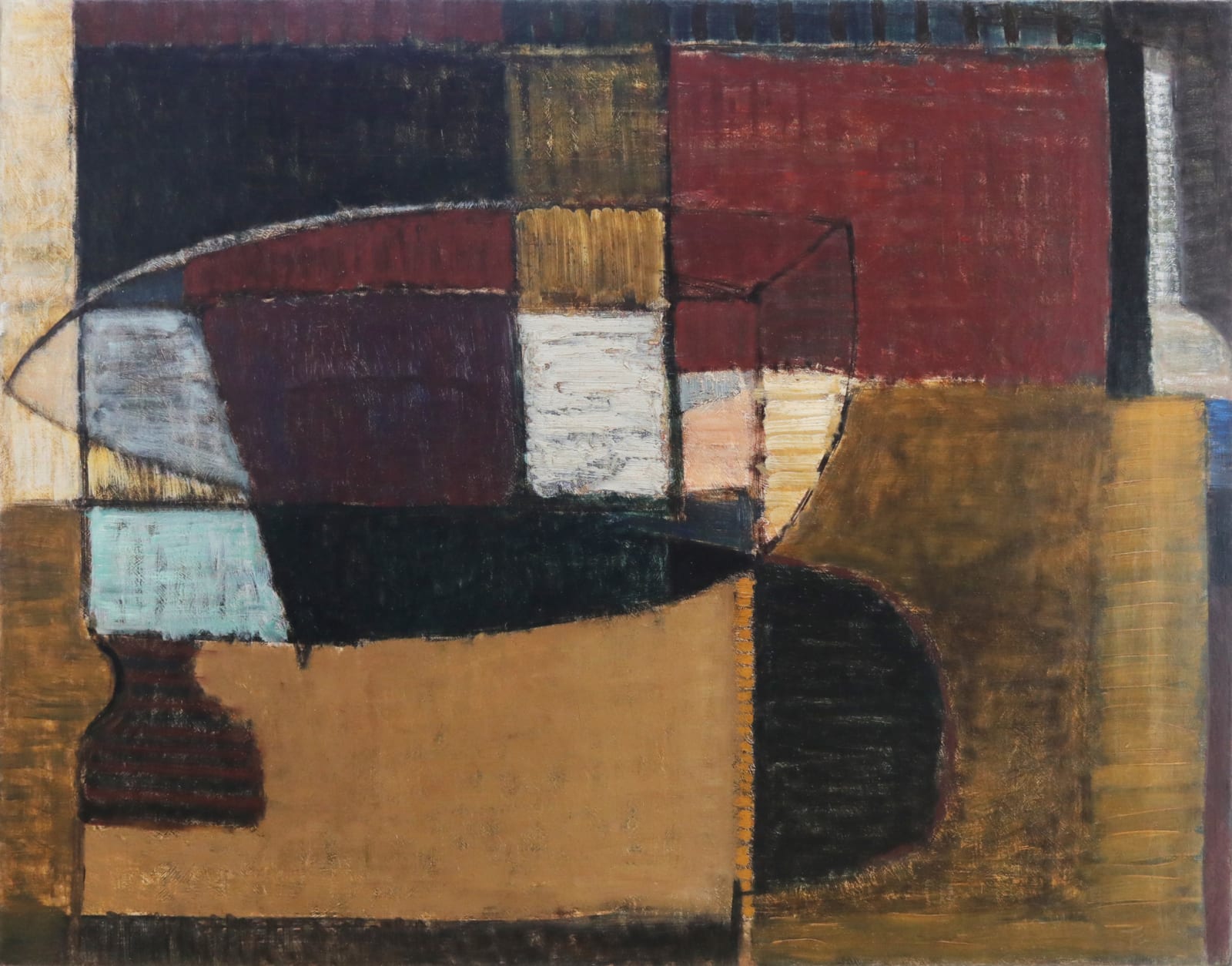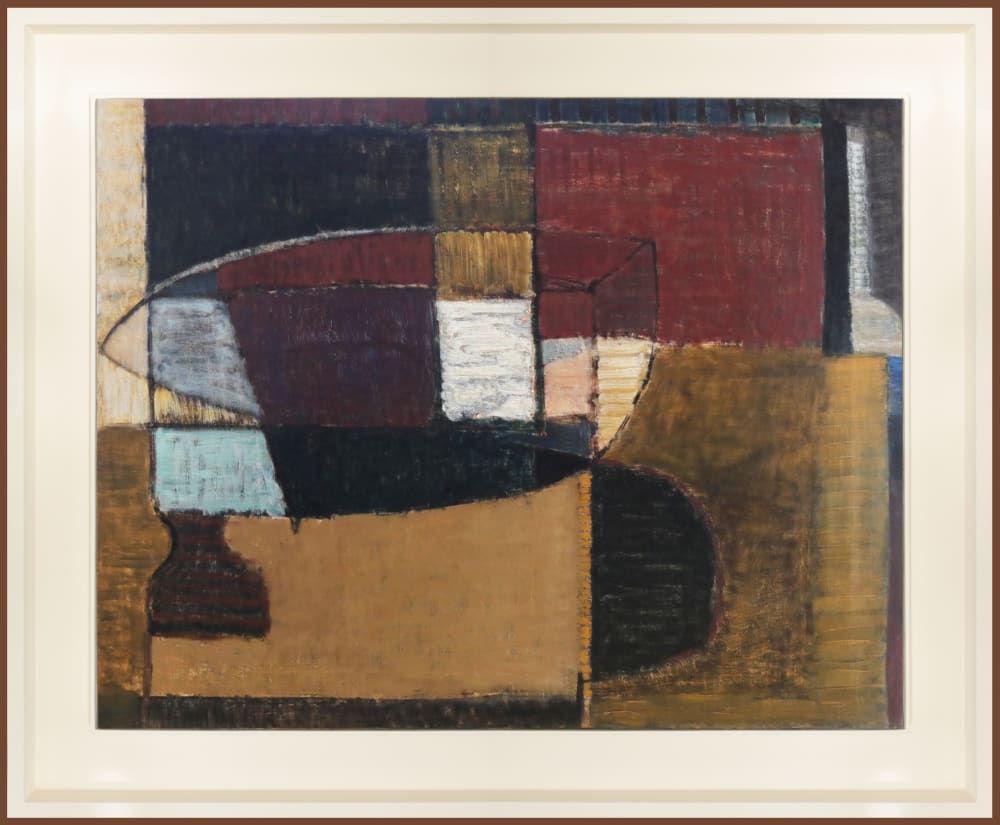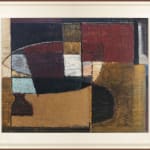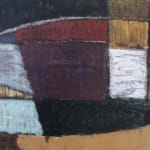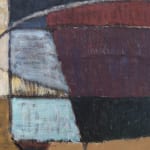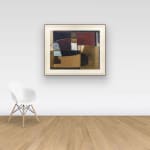Framed: 44.8 x 41.7 cm (17.6 x 16.4 ins)

Boat by Terry Frost. Exhibited in New York in 1951.

Close up of the boat form.

Frost's technique of scraping back and reapplying paint to create texture and define line and form

Boat (1950) by Terry Frost
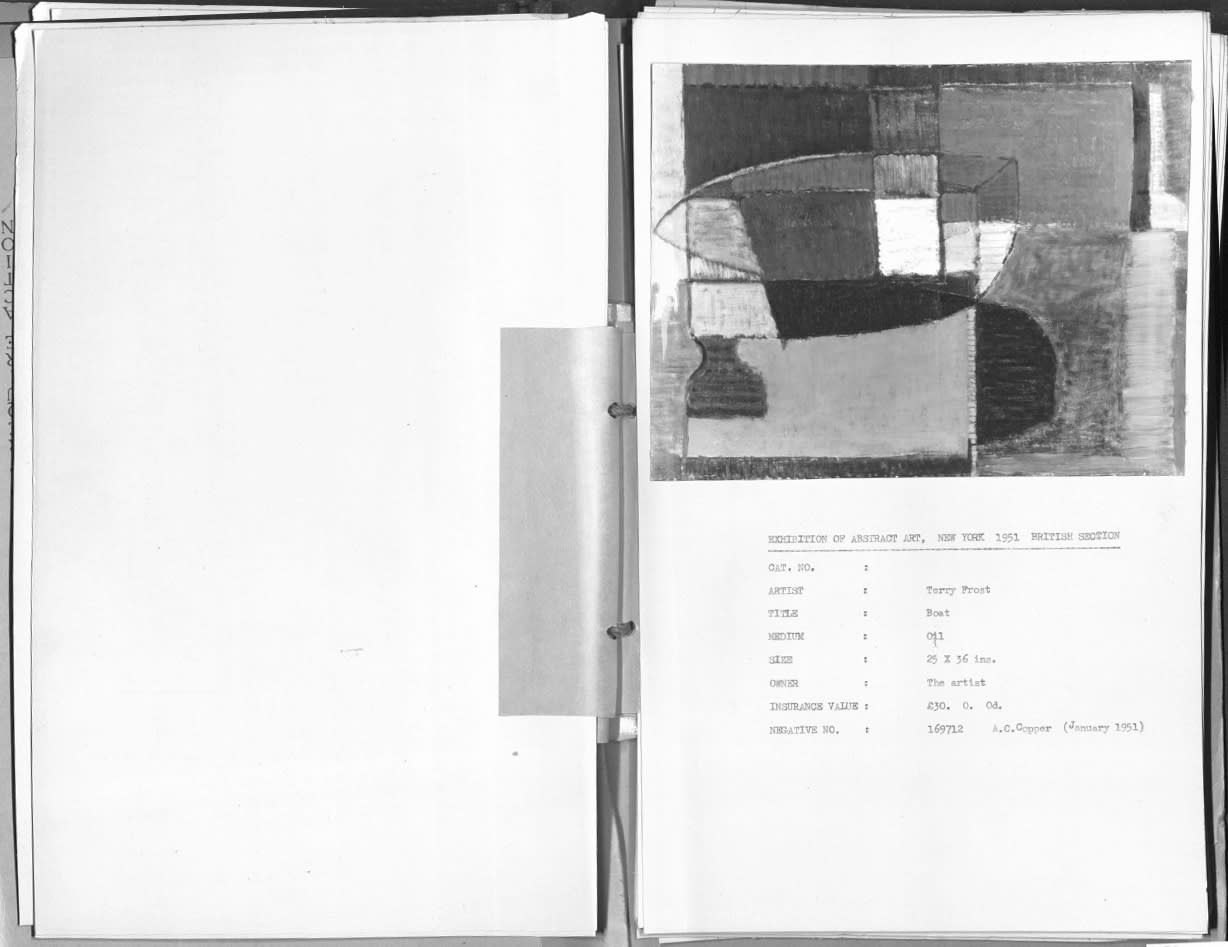
The Arts Council consignment listing of Boat to the American Abstract Artists 15th Annual Exhibition: Danish, British and American Abstract Artists, New York, 1951
Terry Frost 1915-2003
Framed: 93.4 x 113.5cm ( 37 1/8 x 44 11/16ins.)
Further images
Provenance
Dr C. Damiano, London and Milan.
Private collection, Milan, and by descent to the previous owner.
Exhibitions
New York, Riverside Museum. American Abstract Artists 15th Annual Exhibition: Danish, British and American Abstract Artists, March - April 1951, no. 1. (In addition to the Arts Council label on the verso, our thanks to the Tate Library & Archive where the British Council Fine Art archive confirms that ‘Boat’ was featured in the 1951 New York exhibition. Tate Archive file ref: TGA 9712/2/52).
Boat is a landmark St Ives work by Terry Frost. Painted in 1950 it was a British Council submission to the American Abstract Artists Annual Exhibition, British Section, held at the Riverside Museum, New York from March to April 1951. This exhibition was the first significant display of British Abstract paintings in the USA. Frost’s Boat hung alongside paintings by Motherwell, de Kooning, Pollock and Rothko as well as British works by Hepworth, Nicholson, Lanyon, Wells and Barns-Graham. Later that year, from May to June 1951, Walk Along the Quay was displayed in London at the Artists International Associations Abstract Art show in connection with Festival of Britain.
Boat can be viewed as a missing link between Madrigal, 1949, Frost’s first wholly abstract painting, and Walk Along the Quay, 1950, considered the artist’s seminal early St Ives work. The whereabouts of Boat was unknown until recently, the painting having resided for some years in private collections in Italy. The chronology of works in biographies and texts on the life and work of Terry Frost jumps from Madrigal, 1949 to Walk Along the Quay, 1950 and therefore Boat represents an exciting addition to our insight into the artist’s early development as an abstract painter.
In 1947 Frost commenced 2 years at Camberwell School of Art. He travelled back and forth from St Ives where his wife Kath and young family remained at 12 Quay Street. In 1949 Frost painted Madrigal (Leamington Spa Art Gallery & Museum) in response to a compositional assignment set at Camberwell. Of his first totally abstract work Terry said “I subdivided the flat surface with the Golden Section and the square so that every geometrical shape was related to every other shape, and then I used colours emotionally. Apart from the poem (Madrigal by WH Auden), they were very much the Camberwell colours of the time, bottle green, maroon, deep brown …”
In Boat, which is executed on an identical size canvas, as well as Golden Section elements Frost employed the same palette of maroon, deep brown, ochre, white and black but we additionally observe silver blues and a small area of brighter blue to the right. Madrigal contains no curves, only straight lines defining squares and rhombi. In Walk Along the Quay 1950, Frost famously introduces the half-moon boat sections and curves inspired by the mooring lines of St Ives boats. Boat shares the structural addition of curves and half-moon shapes and given the dominant form and artist’s title, these clearly express Frost’s response to an individual boat with mooring lines snaking out; one cutting a semi-circular boat section form into the bottom right quarter of the composition, another curving more gently to the left. As Frost recounted some years later; "The continual movement of the anchored boats, or the moored boats, is something that has fascinated me from the first day I saw them and still does just as much as ever. I think the mooring ropes are the finest sculpture in the world. When I see those ropes just moving, making all the shapes, just a little bit at a time, it’s the most wonderful experience." Closer inspection of Boat reveals considerable process. Frost has in many places scratched back the painted surface to reveal a layer beneath, and in so doing to create texture. He has then given the painted surface even greater depth and complexity with the applicaton of further colour; in places thinly applied and elsewhere, brushed thickly in short aligned strokes. Techniques that we see consistently in the works of his St Ives peer and friend, John Wells and those of Ben Nicholson.
In both the architecture of the painting, and its palette, Boat appears to be a step between Madrigal, with which it shares much of its palette and the Golden Section square forms, and Walk along the Quay, with which it shares the curves of boats and mooring lines that so mesmerised the artist in St Ives.
In 1950 with Ben Nicholson’s help, Frost was given the use of No4 Porthmeor Studios in St Ives by the Arts Council. Whilst still living at 12 Quay Street, at daybreak Frost would regularly take his infant son Adrian for a jaunt around St Ives’ harbour. At low tide the boats would rest on the ochre beach with mooring ropes snaking away. Here and there were patches of wet which glistened white and silver-blue in the early morning light. Cast iron mooring bollards on Smeaton’s Pier, hand painted buoys, rust coloured nets and other fishing paraphernalia added to the wealth of visual stimuli. Frost sought to absorb the experience of these observations and then rediscover them in paint in his Porthmeor studio, often later once the idea had taken shape. Works from this formative period, 1950-52, are rare but the present work is most unusual, not only because it is a very early formative work, but because the artist is concerned with the idea of one boat and its immediate environment, rather than the wider harbour and pattern of multiple vessels.
Boat is a highly significant early St Ives work by Terry Frost with a wonderful provenance having been part of the first large display of abstract work by British artists to be shown in the USA; hung alongside the 1950/51 output of the leading American modernists. As a step between Madrigal and Walk Along the Quay, the painting enhances our insight into the artist’s development as one of Britain’s leading abstract painters.
-
 Terry FrostMovement, study, 1951Watercolour, bodycolour and charcoal22.8 x 20.3 cm (9 x 8 ins)
Terry FrostMovement, study, 1951Watercolour, bodycolour and charcoal22.8 x 20.3 cm (9 x 8 ins)
Framed: 44.8 x 41.7 cm (17.6 x 16.4 ins) -
 Terry FrostOval Blue Squeeze, 2003Acrylic and collage on canvas76 cm x 137 cm (30 ins x 54 ins)
Terry FrostOval Blue Squeeze, 2003Acrylic and collage on canvas76 cm x 137 cm (30 ins x 54 ins)
Framed 87.8 x 148 cm (34 1/2 x 58 1/4 ins) -
 Terry FrostRed and Black Verticals, 1959Oil on canvas127 x 76.2 cm (50 x 30 ins)
Terry FrostRed and Black Verticals, 1959Oil on canvas127 x 76.2 cm (50 x 30 ins)
Framed: 134 x 84 cm (52.8 x 33 ins) -
 Terry FrostOrange and Ochre, 1959Oil on canvas63.5 x 76 cm (25 by 30 ins.)
Terry FrostOrange and Ochre, 1959Oil on canvas63.5 x 76 cm (25 by 30 ins.)
Framed: 67.9 x 80.6 cm (26.7 by 31.7 ins.)
This website uses cookies
This site uses cookies to help make it more useful to you. Please contact us to find out more about our Cookie Policy.

